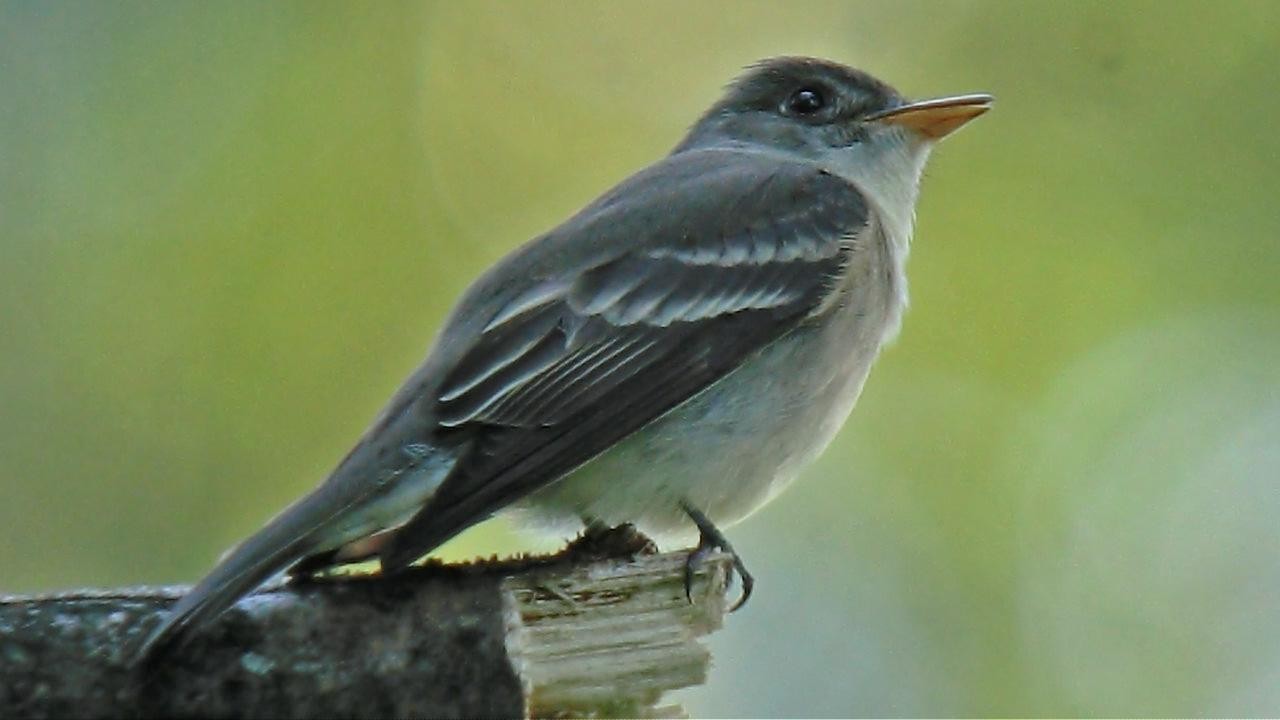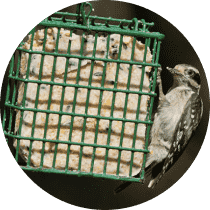Eastern Wood-pewee
A species of Pewees Scientific name : Contopus virens Genus : Pewees
Eastern Wood-pewee, A species of Pewees
Botanical name: Contopus virens
Genus: Pewees
Content
Description People often ask General Info
 Photo By Andy Reago & Chrissy McClarren , used under CC-BY-2.0 /Cropped and compressed from original
Photo By Andy Reago & Chrissy McClarren , used under CC-BY-2.0 /Cropped and compressed from original Description
A medium size flycatcher, the eastern Wood-pewee prefers to wait on tree branches for prey to appear. It feeds primarily on insects, hopping out from its perch to catch its prey. The bird is often seen in woodlands and deciduous forests but will expand its habitat to include any area with trees.
Size
16 cm
Life Expectancy
7 years
Nest Placement
Tree
Clutch Size
2 - 4 eggs
Number of Broods
12 - 14 days
Nestling Period
16 - 18 days
Feeding Habits
Eastern Wood-pewee predominantly eats insects, making 36-68 feeding flights per hour to catch prey like flies, bees, and beetles. It occasionally consumes berries and seeds, supplementing its diet with plant material.
Habitat
The habitat of eastern Wood-pewee encompasses deciduous or mixed forests in eastern North America. They adapt to various wooded environments ranging from mature woodlands and urban shade trees to orchards. Their breeding areas include open pine woodlands and hardwood-conifer forests. During migration, they utilize forest edges and clearings, while in winter, they reside in northern South America's wooded or shrub-rich areas below 4,300 feet elevation.
Nest Behavior
Eastern Wood-pewee exhibit nest-building and egg-laying in late spring to early summer. Parents share duties, with both constructing the nest and caring for the eggs and young. Typically, they raise one or two broods per season.
Nest Characteristics
Eastern Wood-pewee construct their nests in trees like elms, oaks, maples, and birches, typically 15–70 feet above ground. The camouflage-adapted cup nests are made from grass, bark, twigs, and lichens, measuring 3 inches wide and 1-2 inches high, with a 2-inch-wide, 0.5–1 inch deep inner cup lined with hair and plant fibers.
Dite type
Insectivorous
General Info
Feeding Habits
Bird food type
Bird Feeder Type

Small Hopper

Suet Cage
Sounds
Call
Recording location: Mexico
Song
Recording location: Mexico
Call
Recording location: Panama
Call
Recording location: United States
Behavior
Eastern Wood-pewee are noted for their strong territorial instincts during breeding season, which they fiercely protect across a considerable area. Their day starts with male eastern Wood-pewee modulating their songs as a response to rival males, demonstrating a complex example of avian communication and territory defense. They not only guard against other eastern Wood-pewee but also confront different species that invade their space. Pair bonds seem to be monogamous, with males providing for females as they incubate. Outside breeding, these birds lead solitary lives, especially during migration and on wintering grounds, setting them apart from more social species.
Distribution Area
These birds migrate to Central America and in the Andes region of northern South America. Eastern wood pewees arrive relatively late on breeding grounds (e.g., 18 May to 5 June in southern Ontario). They are rarely seen on their breeding grounds before the last days of April further south. They migrate south at a more usual time, leaving sometimes in late August but most often in September. 
Species Status
The eastern wood pewee is common, widespread, and not considered globally threatened by the IUCN. Its numbers, however, are declining in recent decades, possibly due to the loss of forest habitat in its winter range. It is also possible that the increase of white-tailed deer (Odocoileus virginianus) in its breeding range has led to a change in vegetation and associated invertebrates in the lower levels of the deciduous forests where the eastern wood pewee breeds. 

 Photo By Andy Reago & Chrissy McClarren , used under CC-BY-2.0 /Cropped and compressed from original
Photo By Andy Reago & Chrissy McClarren , used under CC-BY-2.0 /Cropped and compressed from original Scientific Classification
Phylum
Chordates Class
Birds Order
Perching birds Family
Tyrant flycatchers Genus
Pewees Species
Eastern Wood-pewee